- | 5:00 pm
Why Patagonia, Gucci, and Timberland are making a big bet on farming
Regenerative agriculture could help mitigate fashion’s destructive force on the planet. But can it move beyond a buzzword?

You’ve heard about farm-to-table dining. Are you ready for farm-to-closet fashion?
Over the past 40 years, the $1.3 trillion fashion industry has created a vast, complex supply chain. Most brands work with factories and mills to make clothes, but few go all the way back to the farms where the cotton, wool, or rubber is produced. That’s beginning to change.
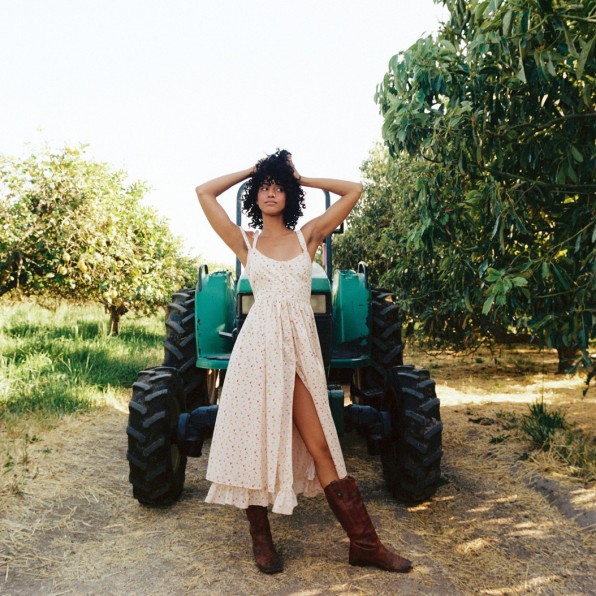
[Photo: courtesy Christy Dawn]
As the fashion industry reckons with its devastating environmental footprint, brands are thinking about how their raw materials are produced; research shows that a majority of a garment’s greenhouse gas emissions and water usage takes place early in the supply chain. Patagonia, Allbirds, Timberland, Mara Hoffman, Christy Dawn, and luxury conglomerate Kering are among a growing list of fashion companies investing in regenerative agriculture, which uses more sustainable farming methods that can reverse climate change, increase biodiversity, and improve soil health. For now, these brands are only producing a small proportion of their raw materials on regenerative farms, but the concept is catching on.
INDUSTRIAL FARMING IS KILLING THE PLANET
For most of history, making garments was a long, expensive process that was intimately tied to farming, which grew the fibers for cloth. But over the last hundred years, industrial farming has changed the game. Today, farmers around the world use modern techniques such as pesticides, irrigation systems, and monocropping (planting a single crop such as cotton) to increase their yields. They then sell their crops to middlemen, who bundle the materials together and sell them on the commodity market to mills. “Brands and consumers are now completely detached from the source of their clothing,” says Rebecca Burgess, executive director of Fibershed, a nonprofit she founded in 2010 to develop regenerative fiber systems for the fashion industry.
All of this has come at an enormous cost to the planet. Experts estimate that big agriculture is responsible for roughly 30% of global carbon emissions, 70% of freshwater use, and 60% of the loss of biodiversity. And the planet’s agricultural land has become so depleted that the United Nations predicts that there are about 60 growing seasons left until the world’s soil will no longer grow crops.
Regenerative agriculture is designed to reverse this damage. The concept emerged in the 1970s with pioneers such as Robert Rodale. He founded the Rodale Institute to study and implement practices that would rejuvenate the land, including cutting out pesticides, since they kill the microorganisms in the soil that keep it healthy. Regenerative farming builds on these ideas, through growing cover crops, planting multiple types of crops together, rotating crops, and reducing tilling. “Our goal is fundamentally to improve the health of the soil,” says Jeff Tkach, the Rodale Institute’s chief impact officer. “This makes the crops healthier, which ultimately improves the profitability of the farm.”
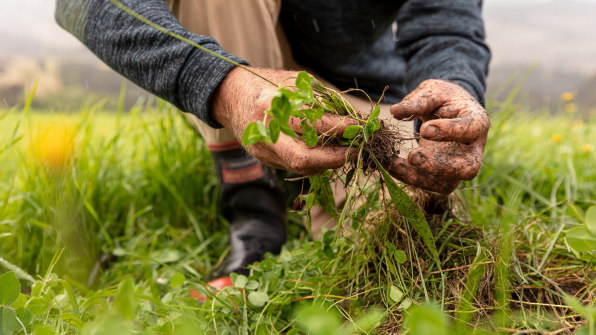
[Photo: Allbirds]
As climate change has become a growing concern, regenerative farming has become even more relevant because these methods can actively sequester carbon. Through photosynthesis, plants absorb carbon dioxide from the air and pass it through their root systems into the soil. Eventually, this carbon becomes a solid mineral. But farming methods such as tilling can release carbon back into the atmosphere. “In conventional farming, when farmers take to the field with tillage equipment, we see heat maps all over the United States of carbon getting released back into the atmosphere,” Tkach says. “But through regenerative methods, our soils can become a carbon sink.”
For the past two decades, regenerative agriculture has been a growing movement in the food industry, thanks to big players such as General Mills, Danone, and Nestlé investing in it. But over the past five years, Tkach says fashion brands have begun to show an interest. He believes this could be a game changer. “The fashion industry has always been good at setting trends,” he says. “There is a growing movement around agriculture in fashion that could make soil sexy.”
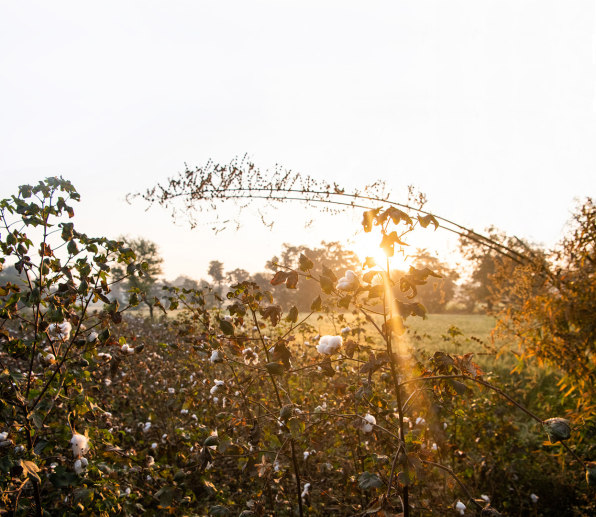
[Photo: courtesy Patagonia]

[Photo: TGI/courtesy Timberland]
Others are following. Timberland just announced that it’s building a regenerative rubber supply chain in Thailand, which will grow various tree species to mimic a natural forest ecosystem. It hopes to pilot this rubber in products in 2023 and eventually allow other brands to buy it. Allbirds announced that all of its wool will come from regenerative sources by 2025. Kering, which owns Gucci, Balenciaga, and other luxury brands, has launched a regenerative fund together with Conservation International. It plans to transform a million hectares of farmland that produce raw materials for fashion to use regenerative-agriculture methods in five years.
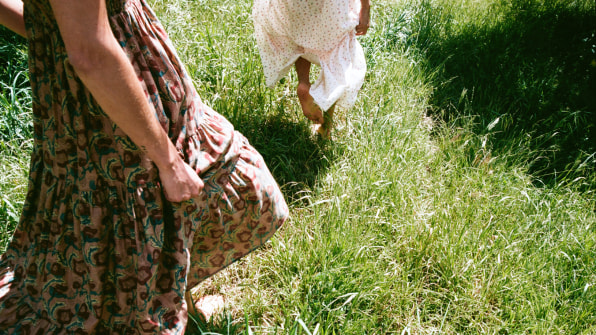
[Photo: courtesy Christy Dawn]
THE FARM-TO-CLOSET MOVEMENT
Creating an entirely new supply chain is daunting, but even smaller brands are taking the plunge. Los Angeles fashion label Christy Dawn, for instance, has spent two years creating its first “farm-to-closet” collection. When founders Christy and Aras Baskauskas launched the company, in 2013, they had very little insight into the source of their raw materials: They bought bolts of deadstock fabric from suppliers in the Los Angeles Garment District, which they would take to their factory a few blocks away.
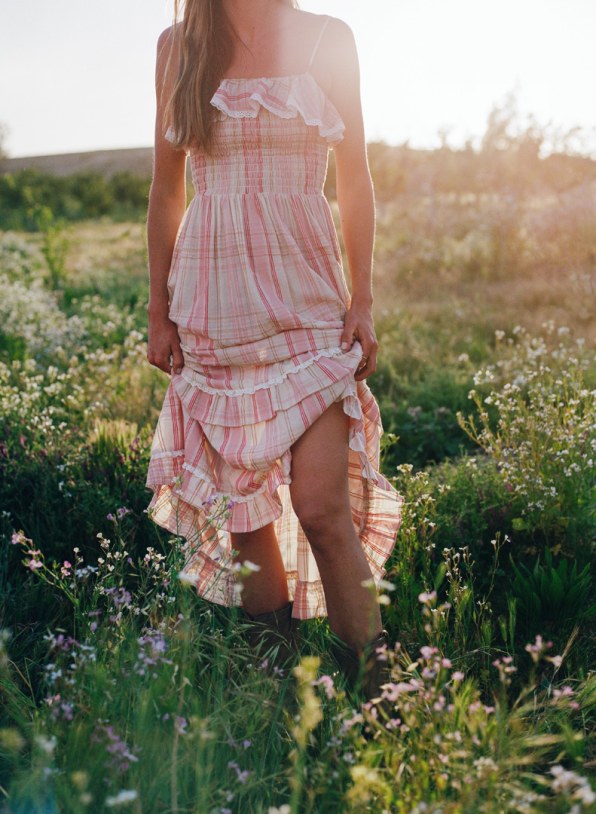
[Photo: courtesy Christy Dawn]
In 2019, they began to explore regenerative agriculture. Since they had no experience in farming, they partnered with Oshadi, an Indian regenerative-farming collective, which helped them lease four acres of land in the south Indian town of Erode, which had become depleted from decades of overfarming and pesticide usage. Then they paid farmers three times the local standard wage to use traditional techniques to replenish the soil, such as composting to fertilize the soil and rotating crops, which increases the biodiversity. “We’ve discovered that regenerative farming is really nothing new,” says Aras, the company’s CEO. “It’s just returning to ancient farming methods that have been passed down from generation to generation.”
With this small cotton crop, Christy Dawn partnered with Oshadi’s network of gins, weavers, organic dye experts, and block-printing artisans to create the fabric, which they imported to their factory in downtown Los Angeles. This spring, the brand released its first collection using this cotton. It consists of 54 dresses in the brand’s signature flowy, floral aesthetic. But in many ways, this was just a test run. Christy Dawn has since leased 70 acres of land in the same region, to increase its volume of regenerative cotton, and the founders hope to eventually make the entire collection from regenerative sources. “This approach comes with more risk, since a drought could wipe out our crop,” says Aras. “But we think it’s fair that brands should help shoulder this risk, instead of putting it all on the farmers.”
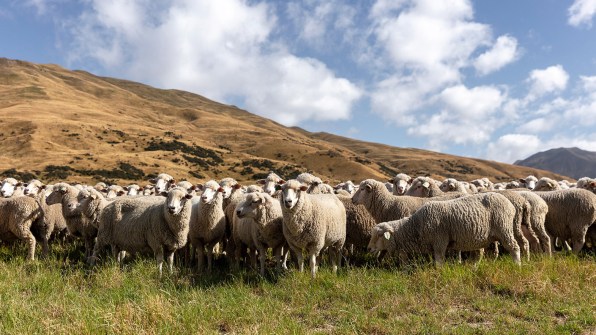
[Photo: Allbirds]
THE FUTURE OF REGENERATIVE FARMING
Regenerative agriculture in fashion is still in its infancy. While brands are beginning to dip their toes into farming, none has yet been able to scale its programs. “Few brands openly talk about how much of their product line is regenerative,” says Burgess, of Fibershed. “My suspicion is that it’s still a very small proportion.”
This is exacerbated by the fact that the industry lacks consistency or standards, even for what “regenerative” means. This is partly because the practices need to be tailored to specific farms and regions. Sheep farmers in New Zealand have different needs than cotton farmers in India, so there needs to be nuance in the approach. “Regenerative agriculture is a little like the Wild West right now,” says Hana Kajimura, head of sustainability at Allbirds. “There are so many different interpretations of the word. Our strategy has been to work closely with experts at the Savory Institute that have established programs, while also leaving room to interpret those standards based on the farmers we’re working with.”
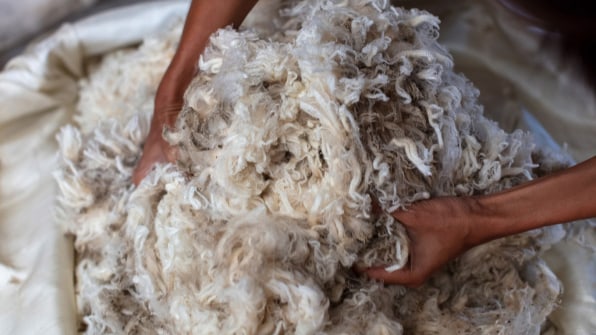
[Photo: Allbirds]
The good news is that there’s a big push among regenerative-agriculture organizations to create industry standards. Fibershed is creating a network of domestic regenerative farms that help brands such as Mara Hoffman and the North Face source fibers. The Savory Institute has established guidelines that help farmers transition to regenerative agriculture. “We’ve scaled up a way to measure the same environmental outcomes at each farm, from soil health to carbon sequestration to water usage and biodiversity,” says Bobby Gill, director of development and communications at the Savory Institute. “If we’re going to nail this, we need to be measuring consistently and holistically, beyond just a single variable.”
And in 2017, the Rodale Institute launched the Regenerative Organic Certified program to start creating an official standard. It builds on the USDA “certified organic” seal by adding soil health, animal welfare, and human rights requirements. Patagonia is currently piloting it. Barbour, who has watched these regenerative practices play out firsthand in the farms in India, says she’s been encouraged by how quickly dry, damaged land can come back to life. “These ancestral farms are now these beautifully biodiverse places,” she says. “Not just with straight rows of cotton, but with many crops, birds, and trees. We hope that many other brands join us on this journey, because we can’t do it alone.”






































